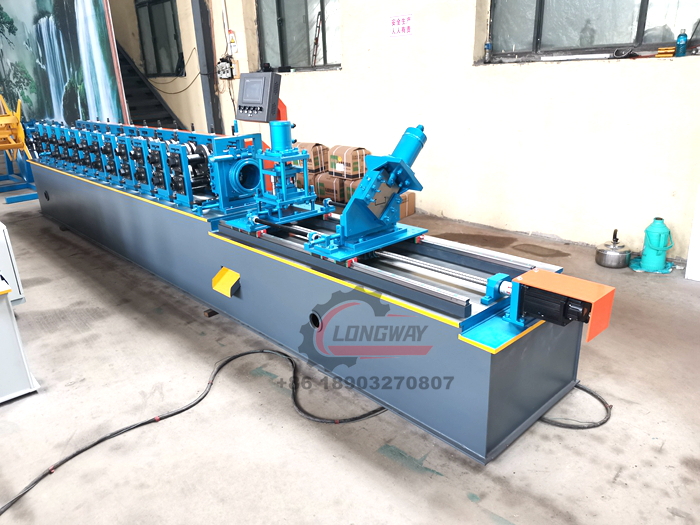Stud Track Roll Forming Equipment for Efficient Manufacturing Solutions
Stud Track Roll Forming Machine A Comprehensive Overview
The modern construction industry demands efficient, reliable, and cost-effective solutions for various structural components. One of the equipment that has revolutionized the production of structural components is the stud track roll forming machine. This state-of-the-art machinery is designed to manufacture metal studs and tracks used in building frames, particularly in commercial and residential constructions. In this article, we will delve into the workings, advantages, and significance of stud track roll forming machines.
What is a Stud Track Roll Forming Machine?
A stud track roll forming machine is an automated piece of equipment that continuously forms metal sheets into specific profiles used in framing. These profiles typically include C-shaped and U-shaped tracks and studs, which serve as essential components in wall systems. The machine works by feeding flat metal sheets, typically made of galvanized steel or other metals, into a series of rollers that gradually shape the material into the desired profile.
How Does it Work?
The process begins with the raw material, often steel coils, loaded onto the unwinding station of the machine. As the coils are unwound, the metal is fed into the roll forming section. This section comprises multiple roller stations, each meticulously designed to progressively shape the metal sheet.
1. Feeding The machine takes the flat metal sheet and feeds it through a series of rollers that bend and shape the metal. 2. Roll Forming As the metal passes through each roller station, it is gradually transformed into the desired profile. The shape is achieved by adjusting the spacing and angles of the rollers, allowing for a precise and consistent bend.
3. Cutting Once the metal has been formed into the desired shape, it is cut to length. Many roll forming machines integrate a cutting mechanism that can perform this step on-the-fly, increasing efficiency.
4. Output The finished products—studs and tracks—are then collected for further use in construction projects.
Advantages of Stud Track Roll Forming Machines
stud track roll forming machine

2. Consistency and Precision Automated processes ensure that every piece produced meets stringent quality standards, providing uniformity crucial for structural integrity.
3. Cost-effectiveness The ability to create products in large quantities reduces labor costs and material waste. Additionally, because roll forming allows for the use of thinner materials without sacrificing strength, production costs further decrease.
4. Versatility With adjustments to the roller setup, manufacturers can produce various profiles and sizes, making these machines suitable for different construction needs.
5. Reduced Labor Needs Automated roll forming machines require fewer operators compared to traditional methods, allowing labor to be reallocated to other critical areas of production.
Applications in the Construction Industry
Stud track roll forming machines are instrumental in various applications within the construction industry
- Wall Framing Metal studs and tracks are fundamental in constructing load-bearing walls and partition walls, offering superior strength and fire resistance compared to wood framing.
- Ceiling Systems Many suspended ceiling systems rely on metal tracks and studs, which are easily produced by these machines.
- Commercial Buildings The demand for steel framing in commercial constructions is on the rise, as steel provides durability and scalability for large structures.
Conclusion
In conclusion, the stud track roll forming machine plays a vital role in modern construction processes, allowing for efficient production of critical structural components. The combination of speed, precision, and cost-effectiveness makes it an invaluable asset to manufacturers in the building industry. As construction practices continue to evolve, the importance of such machinery will only grow, contributing to safer and more sustainable building practices. With innovative advancements in technology, new features and enhancements to these machines will likely emerge, further optimizing the manufacturing process and supporting the demands of the ever-evolving construction landscape.
-
Roof Panel Machines: Buying Guide, Types, and PricingNewsJul.04, 2025
-
Purlin Machines: Types, Features, and Pricing GuideNewsJul.04, 2025
-
Metal Embossing Machines: Types, Applications, and Buying GuideNewsJul.04, 2025
-
Gutter Machines: Features, Types, and Cost BreakdownNewsJul.04, 2025
-
Cut to Length Line: Overview, Equipment, and Buying GuideNewsJul.04, 2025
-
Auto Stacker: Features, Applications, and Cost BreakdownNewsJul.04, 2025
-
Top Drywall Profile Machine Models for SaleNewsJun.05, 2025








